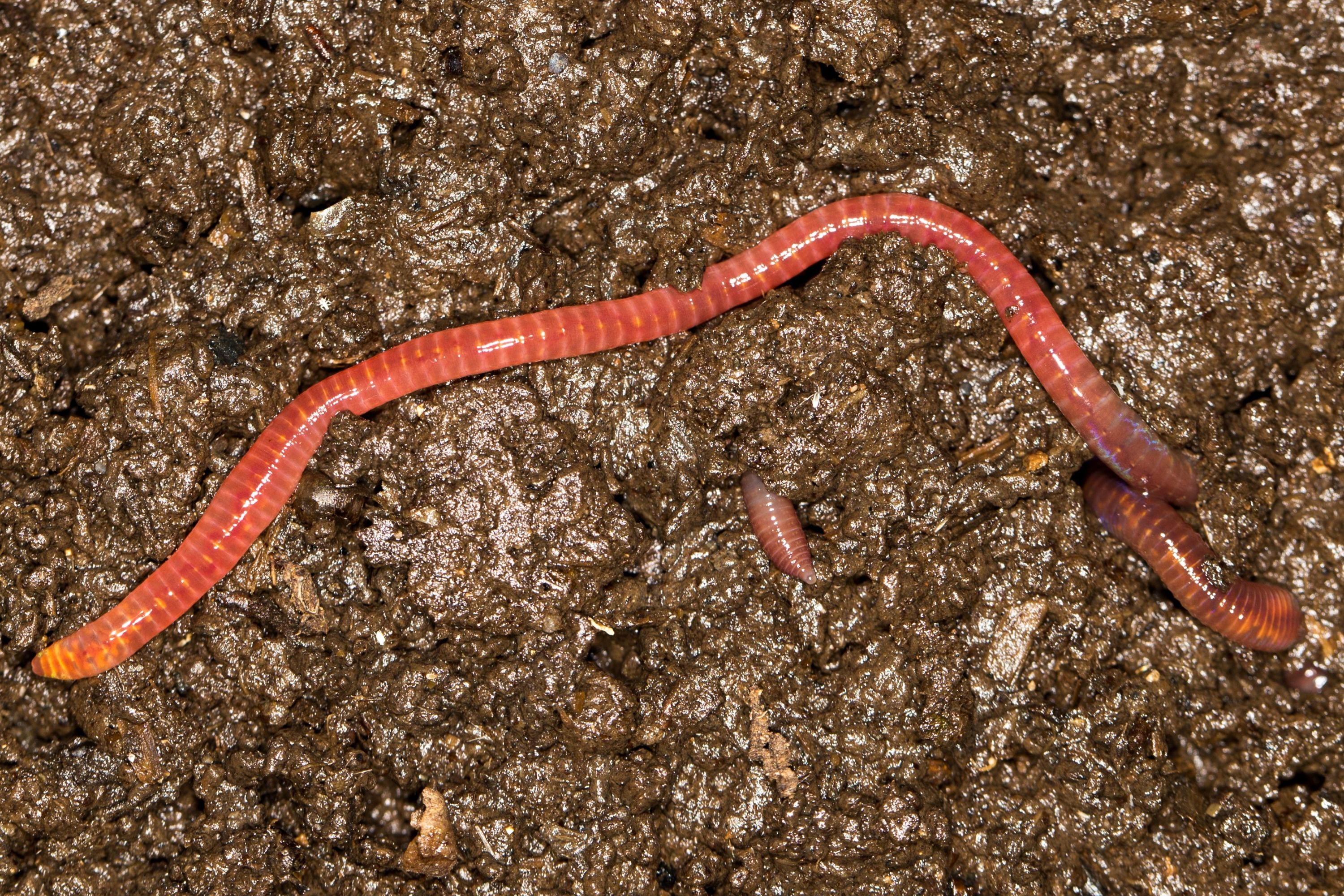Manure worm
(Eisenia fetida)

Description
Eisenia fetida (older spelling: foetida), known under various common names such as manure worm,redworm, brandling worm, panfish worm, trout worm, tiger worm, red wiggler worm, etc., is a species of earthworm adapted to decaying organic material. These worms thrive in rotting vegetation, compost, and manure. They are epigean, rarely found in soil. In this trait, they resemble Lumbricus rubellus. Red wigglers are reddish-brown in color, have small rings around their body and have a yellowish tail.They have groups of bristles (called setae) on each segment that move in and out to grip nearby surfaces as the worms stretch and contract their muscles to push themselves forward or backward. Eisenia fetida worms are native to Europe, but have been introduced (both intentionally and unintentionally) to every other continent except Antarctica. Eisenia fetida also possess a unique natural defense system in their coelomic fluid: cells called coelomocytes secrete a protein called lysenin, which is a pore-forming toxin (PFT), which is able to permeabilize and lyse invading cells. It is best at targeting foreign cells whose membranes contain significant amounts of sphingomyelin. (Lysenin is also toxic to organisms lacking sphingomyelin in their cell walls, including Bacillus megaterium, though the pathway is not understood). Eisenia fetida are used for vermicomposting of both domestic and industrial organic waste. Vermicomposting septic systems have been used for decades and allow for decentralized on-site processing of blackwater using Eisenia fetida. Tiger worms are also being tested for use in a flushless toilet, currently being trialled in India, Uganda and Myanmar. When roughly handled, a redworm exudes a pungent liquid, thus the specific name foetida meaning "foul-smelling". This is presumably an antipredator adaptation. Eisenia fetida is closely related to E. andrei, also referred to as E. f. andrei. The only simple way of distinguishing the two species is that E. fetida is sometimes lighter in colour. Molecular analyses have confirmed their identity as separate species, and breeding experiments have shown that they do produce hybrids.
Taxonomic tree:







